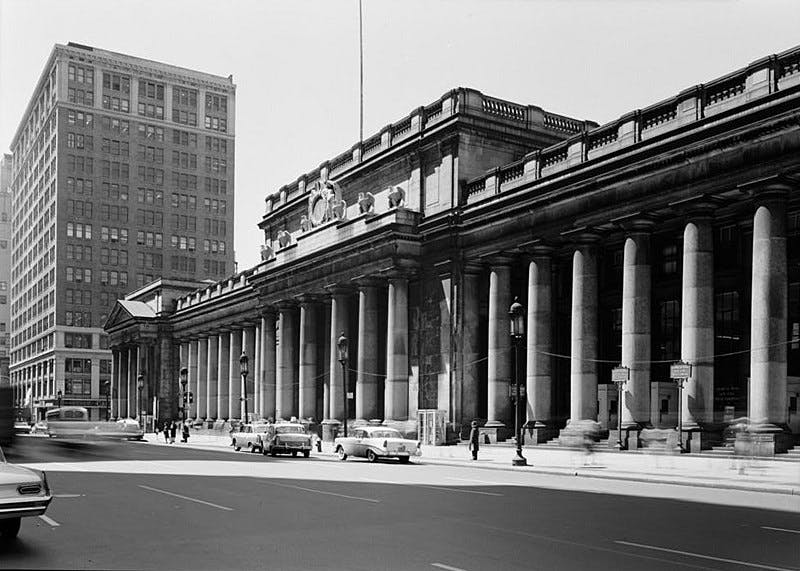To Boost New York City, Rebuild the Original Penn Station
The monumental 1910 station can be rebuilt — without too much cost or fuss, and without disrupting current train service.

No single construction project would do more to elevate New York City’s future than rebuilding Pennsylvania Station in its original form.
The station opened in 1910 to immediate acclaim as the greatest railroad terminal in the world. It was built in the Beaux Arts style to last for centuries, but was demolished a mere 50 years later, an act of cultural vandalism that left a hole in the heart of Manhattan. It has existed ever since.
“One entered the city like a god,” historian Vincent Scully said, “one scuttles in now like a rat.”
ReThinkNYC, which argues that the station can and should be rebuilt, has just submitted a 73-page report recommending this step to the Empire State Development Corporation. Its conclusion reads: “New York City, a titan in banking, finance, the arts, and entertainment, must rebuild Penn Station, especially after the disproportionate impact on New York City of the Covid crisis, if it is to continue to play a leadership role in the 21st century.”
The report adds that overcoming “the absurd anomaly of a world-class city with its most important transit hub confined to the basement of a hockey rink is one of the most important land-use decisions New York will face for perhaps the next 100 years.”
And indeed the station can be rebuilt — without too much cost or fuss, and without disrupting current train service. What remains intact today is extensive: the trackage, the platforms, and the infrastructure that upholds the elements that oppress 600,000 passengers a day: the concourses, the waiting areas, and Madison Square Garden. To rebuild Penn Station requires only that those be removed and replaced by a reconstruction of the head house and train shed, designed by Charles Follen McKim of the firm of McKim, Mead & White.
A full set of blueprints remains. Modern technology can reproduce the original scale and ornament that once wowed the world.
Of course, it will take more than high civic aspirations and high technology to remove Madison Square Garden from its super-squat atop Penn Station. Perhaps the primary challenge to the proposal is political rather than technological, let alone spiritual.
The wealthy Dolan family, whose lease extension on the MSG facility runs out next year, shows no sign of interest in moving, even though the state itself has requested its relocation. ReThinkNYC suggests several locations that could accommodate a rebuilt Garden nearby.
A rebuilt Penn Station would blend the beauty of the original with features that today’s passengers and tourists would expect, including shops, restaurants, and other amenities updated for the 21st century traveler. Some argue that we already have a beautiful station: Grand Central Terminal. True enough, and blessedly so. But few recall the grandeur of Penn Station.
The plan to rebuild Penn Station in its original style was first proposed by architect Richard Cameron, and is featured in a broader plan by ReThinkNYC to transform regional rail with the sort of through-running trackage that serves most advanced stations worldwide.
A rebuilt Penn Station would be merely the beginning of a transformation in Midtown that would dwarf the benefits and the cost of the Empire Station Complex proposed for the area by Governor Cuomo and his successor. This ridiculous, 1960s-style urban renewal plan to surround Penn Station with skyscrapers has been condemned by many local civic leaders, politicians, and advocacy groups.
If New York rejects that plan, imagine a rebuilt Penn sitting next to both the Moynihan Train Hall, opened in 1914 as a post office, and the surviving Hotel Pennsylvania (slated for demolition, but the legal battle to save it rages), with Madison Square Garden relocated and rebuilt nearby in its original style by Stanford White. It would create an urban paradise of four buildings by McKim, Mead & White.
Fitting the great city into an architectural style that reflects the tastes of most Americans, this would create a template for future development in the neighborhood and beyond, bending the city’s future toward what New Yorkers think of when they think of the New York that once was and can be again.
